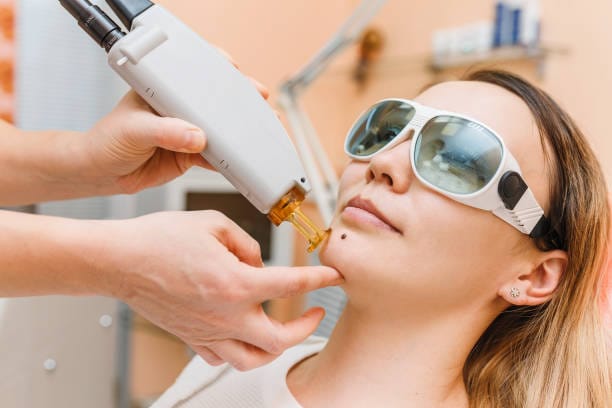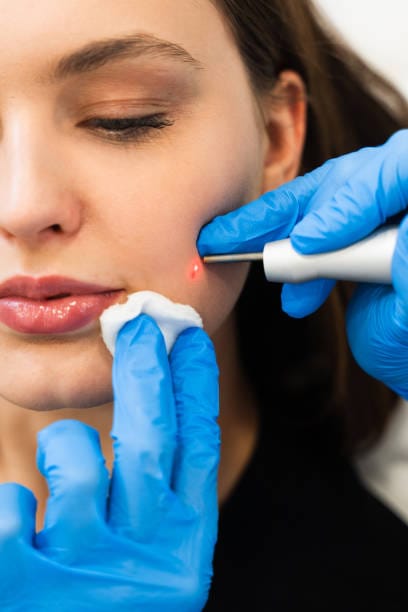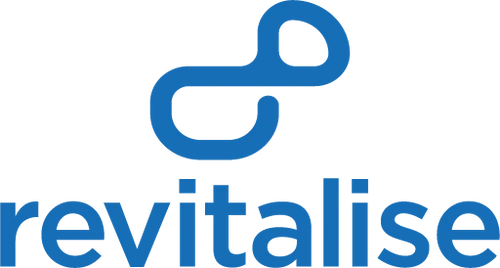Laser Mole Removal Treatment: A Non-Invasive Solution | revitalise London

Moles are a common skin feature, but for various reasons, some individuals may choose to have them removed. Whether it’s for aesthetic reasons, medical concerns, or simply a personal preference, there are various methods available to remove moles. One of the most effective and non-invasive treatments for mole removal is laser mole removal. This modern technique offers a safe, efficient, and minimal downtime solution that is increasingly becoming the treatment of choice.
Unlike traditional methods like excision or freezing, laser mole removal uses focused light to target the mole, breaking down its pigment without affecting the surrounding skin. This makes it a precise and gentle option, particularly for people with sensitive skin or those looking for a quick recovery. Additionally, the procedure is relatively painless, with minimal discomfort during and after the treatment.
In this article, we will explore everything you need to know about laser mole removal, including its benefits, the procedure itself, potential risks, recovery, and cost. We’ll also explain why revitalise London is a top choice for this treatment, ensuring that you have all the information necessary to make an informed decision.
What is Laser Mole Removal?
Laser mole removal is a modern, non-invasive technique used to safely and effectively remove moles from the skin. The treatment works by using focused laser light to target the pigment within the mole, breaking it down without harming the surrounding skin. This makes it a precise method of mole removal, which is a major advantage over older techniques like excision or cryotherapy.
The laser works by emitting light in specific wavelengths that are absorbed by the pigment (melanin) in the mole. This energy is absorbed and converted into heat, which destroys the cells in the mole and causes it to gradually fade away. The surrounding skin remains unaffected by the procedure, which reduces the risk of scarring and ensures a smooth, even result.
One of the key benefits of laser mole removal is its ability to treat a wide range of moles, whether they are flat or raised, small or large. The procedure is especially useful for individuals with sensitive skin, as it causes minimal irritation and is generally well-tolerated by most skin types.
Typically, a laser mole removal session lasts between 15 and 30 minutes, depending on the size and number of moles being treated. Since it is a non-invasive procedure, there is no need for stitches or significant downtime, making it a convenient option for those with busy lifestyles.
Benefits of Laser Mole Removal
Laser mole removal has gained popularity due to its numerous benefits over traditional mole removal methods like excision, cryotherapy, or shaving. This innovative treatment offers several advantages, making it an attractive option for those looking for a non-invasive, effective way to remove moles. Here are the key benefits:
1. Minimal Pain and Discomfort: One of the most significant advantages of laser mole removal is that it causes minimal pain. While the procedure may involve some mild discomfort, most patients find it much less painful compared to excision or freezing methods. The sensation is often described as a slight tingling or warmth, and a local anaesthetic may be applied to further reduce discomfort.
2. Precision and Accuracy: The laser is highly precise, allowing it to target the mole specifically while leaving the surrounding skin unharmed. This reduces the risk of complications such as infection or scarring, which can be more common with traditional methods. This precision is particularly beneficial for smaller moles or those in sensitive areas of the body.
3. Minimal Downtime: With laser mole removal, the recovery time is relatively quick compared to other methods. Most patients can resume normal activities immediately after treatment, although they should avoid direct sun exposure to the treated area for a short time. There is also no need for stitches, and the procedure is often completed in a short amount of time.
4. Reduced Risk of Scarring: Traditional mole removal techniques, especially those that involve cutting or shaving, can sometimes result in scarring. Laser mole removal, however, significantly reduces the chances of scarring, as the laser vaporizes the mole without disturbing the surrounding tissue. This is ideal for people who are concerned about post-treatment scarring.
5. Suitable for Various Skin Types and Moles: Whether you have light or dark skin, laser mole removal can be tailored to suit your specific skin type and the characteristics of the mole. The procedure can treat a wide variety of moles, including flat, raised, or even pigmented moles, making it a versatile option.
6. Quick Procedure: The treatment itself is typically quick, with most sessions lasting between 15 and 30 minutes, depending on the size and number of moles being treated. This makes it convenient for individuals with busy schedules who want to address multiple moles in one visit.
With these benefits, laser mole removal has become a preferred choice for many individuals seeking a quick, effective, and minimally invasive way to improve their appearance and remove unwanted moles.
The Procedure: What to Expect in Laser Mole Removal
When opting for laser mole removal, it’s important to know what the procedure entails, from the initial consultation to the aftercare. Understanding the steps involved ensures you are well-prepared and comfortable throughout the treatment. Here’s a step-by-step breakdown of what you can expect:

1. Consultation and Assessment: Before undergoing the procedure, you'll have an initial consultation with a qualified professional. During this appointment, the practitioner will assess the mole or moles you wish to have removed. They will examine the size, type, and location of the mole to determine if laser treatment is the best option for you. The professional will also discuss your medical history, any medications you are currently taking, and your skin type to ensure that the procedure is safe for you.
2. Preparation: On the day of the treatment, the area around the mole will be cleaned, and a local anaesthetic may be applied to minimize any discomfort. The anaesthetic will numb the area, making the procedure virtually painless. Depending on the size and number of moles, the practitioner may apply a cooling gel or other techniques to further enhance comfort during the procedure.
3. Laser Treatment: During the procedure, the practitioner will use a specialized laser device to target the mole. The laser emits short pulses of light that are absorbed by the pigmented cells in the mole, breaking it down without affecting the surrounding skin. The session typically lasts anywhere from 15 to 30 minutes, depending on the number and size of the moles being treated.
4. Post-Treatment Care: After the laser mole removal, the mole will begin to fade and eventually scab over. The treated area may appear red or swollen immediately after the procedure, but this usually subsides within a few hours. The practitioner will provide aftercare instructions, which may include avoiding sun exposure, not picking at scabs, and applying sunscreen to the treated area.
5. Follow-up Appointments: Depending on the results, you may need a follow-up appointment to ensure that the mole has been successfully removed and there are no complications. In some cases, additional treatments may be necessary, particularly for larger or deeper moles.
The entire process is quick and minimally invasive, allowing you to return to your daily activities in no time. With laser mole removal, you can expect a smooth, effective procedure that offers lasting results with minimal discomfort.
Risks and Side Effects
While laser mole removal is generally considered safe and effective, like any medical procedure, it carries certain risks and potential side effects. It's important to be aware of these to make an informed decision and understand how to mitigate them. Here are the main risks and side effects associated with the procedure
1. Hyperpigmentation or Hypopigmentation: After the procedure, some patients may experience changes in skin pigmentation, where the treated area either darkens (hyperpigmentation) or lightens (hypopigmentation). This is more common in individuals with darker skin tones, though it is usually temporary. These changes in pigmentation may take several months to resolve, and in rare cases, they can be permanent.
2. Scarring: Although laser mole removal significantly reduces the risk of scarring compared to traditional methods, there is still a small chance of scarring, particularly if the aftercare instructions are not followed. Scratching or picking at the scab can result in scarring or infection, so it's crucial to avoid disturbing the treated area during the healing process.
3. Infection: As with any skin procedure, there is a slight risk of infection. However, this is rare when the procedure is performed in a professional setting and proper aftercare is followed. Keeping the area clean and dry, and applying the recommended ointment or sunscreen, can significantly reduce the risk of infection.
4. Swelling and Redness: It’s common to experience some redness, swelling, or tenderness in the treated area immediately after the procedure. These side effects are usually temporary and should subside within a few hours to a day. Cold compresses or prescribed creams can help alleviate these symptoms.
5. Allergic Reactions: In rare cases, patients may experience an allergic reaction to the laser light or the topical anaesthetics used during the procedure. Symptoms may include redness, swelling, or itching, and if any of these occur, it’s important to contact the clinic immediately.
By following the aftercare instructions provided by your practitioner and attending any follow-up appointments, you can minimize the likelihood of these side effects and ensure a smooth recovery.
Recovery and Aftercare For Laser Mole Removal

One of the reasons why laser mole removal is so popular is the minimal downtime required for recovery. Most patients can return to their regular activities immediately after the procedure, but following proper aftercare instructions is key to ensuring a smooth healing process and preventing complications. Here’s what you can expect during recovery and how to care for your skin afterwards:
1. Immediate Post-Treatment: After the procedure, the treated area may appear red, swollen, or slightly irritated. This is a normal reaction to the laser and should subside within a few hours to a day. A cold compress can help reduce swelling and provide relief. It’s important to avoid touching or scratching the area to prevent infection and scarring.
2. Scabbing and Healing: Within a few days, the treated mole will start to form a scab, which is a natural part of the healing process. The scab should be left undisturbed and should fall off on its own. Picking at or scratching the scab can result in scarring and potential infection, so it’s essential to avoid this. Healing typically takes 1 to 2 weeks, depending on the size of the treated area.
3. Sun Protection: After laser mole removal, your skin will be more sensitive to sunlight. To prevent pigmentation changes and protect the healing skin, it is crucial to apply a broad-spectrum sunscreen with SPF 30 or higher to the treated area wherever you go outside. Reapply sunscreen regularly, even on cloudy days. Wearing a hat and avoiding direct sun exposure for a few weeks can also help protect the area.
4. Moisturization: Keeping the treated area moisturized is essential to promoting healing and preventing dryness or flaking. Your practitioner may recommend a soothing ointment or cream to apply to the area after the treatment. Follow their instructions carefully, as using the wrong products can interfere with healing.
5. Follow-Up Appointments: Some patients may require follow-up visits to check the progress of the healing process and ensure that the mole has been successfully removed. During these appointments, your practitioner will assess the area and determine whether any additional treatments are necessary.
6. Possible Side Effects to Watch For: While rare, it’s important to keep an eye on the treated area for signs of infection, such as increased redness, swelling, or pus. If any of these symptoms occur, contact your practitioner immediately. It’s also important to monitor for abnormal scarring or pigmentation changes, although these side effects are usually temporary.
By following proper aftercare instructions, you can enjoy a quick and effective recovery with minimal discomfort and an excellent final result.
Why Choose revitalise London for Laser Mole Removal?
At revitalise London, we pride ourselves on offering cutting-edge, non-invasive treatments with a focus on providing the best possible care for our clients. When it comes to laser mole removal, choosing the right clinic is crucial to ensure the treatment is safe, effective, and tailored to your individual needs. Here are a few reasons why revitalise London stands out:
1. Expert Practitioners: Our team of qualified professionals has extensive experience in performing laser mole removal treatments. With their expertise and attention to detail, they ensure that each procedure is carried out with precision and care, minimizing risks and maximizing results.
2. State-of-the-Art Technology: At revitalise London, we use the latest laser technology, ensuring that the treatment is as effective and safe as possible. Our advanced equipment targets moles with precision, reducing the risk of scarring and promoting faster healing.
3. Personalized Care: We understand that each client is unique, which is why we offer personalized consultations and treatment plans. During your initial consultation, we will assess your moles and recommend the best approach for you, ensuring the procedure is customized to meet your specific needs.
4. Comfort and Support: From the moment you walk into revitalise London, you’ll experience a welcoming and comfortable environment. Our team is committed to ensuring you feel supported and informed every step of the way, from consultation through recovery.
5. Affordable Treatment Options: We believe that high-quality treatments should be accessible to everyone. revitalise London offers competitive pricing and flexible payment options, making it easier to achieve the skin you desire.
When you choose revitalise London for your laser mole removal, you’re opting for a clinic that combines expertise, technology, and care to provide you with outstanding results.
